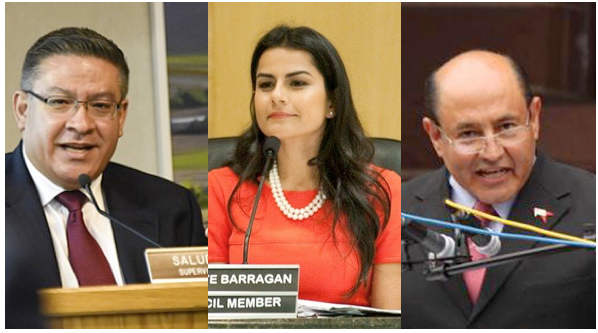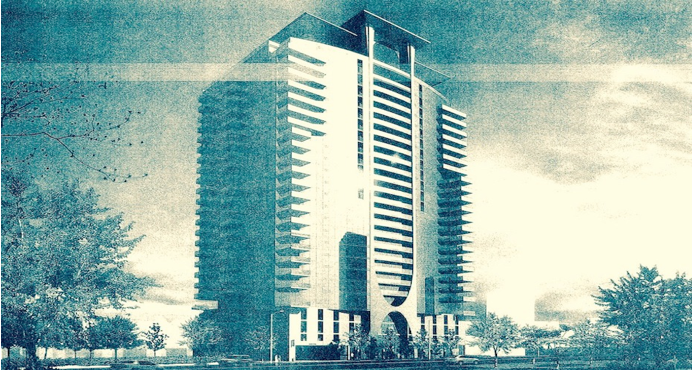Some Say, ‘Don’t Get Mad, Secede!’
PERSPECTIVE-The outcome of the presidential election was a surprise to me as much as it was to anyone. What is not a surprise is the reaction to it.
There have been some extreme events and outbursts, including rioting by some Clinton supporters and some nasty displays of neo-Nazism by the loosely organized Alt-right group. Fortunately, these reactions are not acceptable to the population as a whole. Most of us are moving forward and dealing with change in a rational manner. The checks and balances embedded in the Constitution will prevent significant, or even sudden, permanent changes to our government.
However, one proposed remedy to Trump’s victory resurrects an issue this nation has faced before…secession from the United States.
As a practical matter, according to an opinion piece in the Washington Post, it is virtually impossible, short of an apocalyptic disaster which throws our nation into dysfunctional chaos. Although there are many who believe we have been dysfunctional for a long time, I have news for you – the national government has not only survived, it has expanded its influence.
The Post article states: “Article IV, Section 3 of the Constitution specifies how a state can gain admission to the United States. There is no stipulation, though, for the reverse. Even if Obama wanted to let Texas go — a thought that probably appealed to him for at least a second — there’s no mechanism for him to do so. There’s no mechanism for Congress to simply say, ‘Sure, off you go.’ Once you’re in, you’re in. The United States was born an expansionist enterprise, and the idea of contraction, it seems, never really came up.”
To those proposing a Cal-exit, don’t waste your time, or those of the state’s voters, with a referendum to seek secession.
Having said that, the topic is worthy of an interesting hypothetical discussion.
Did the Civil War really resolve whether secession is constitutional? I touched on this subject in an article I wrote for Citywatch in connection with the Civil War Sesquicentennial.
As I pointed out, the seven states that seceded prior to Lincoln’s inauguration could have gotten away with it had Fort Sumter had not been fired upon by Confederate batteries. Absent the catalyst the attack provided, the nation had no stomach for war, much less a civil war. Had Lincoln raised troops to forcibly end secession, it is likely the entire Upper South would have joined the Lower South, including the critical border states of Kentucky and Maryland. Washington would have been isolated; Lincoln’s administration would have been dead on arrival.
A southern-leaning Supreme Court, led by Chief Justice Roger Taney, a slaveholder himself, may have ruled in favor of the break.
What the Civil War did make certain was the illegality of forceful secession.
Does that mean peaceful or passive secession is permissible?
As mentioned earlier, there is no process for separation via legislation. There is nothing in the Constitution to guide Congress; nothing even stipulating a voting margin for such an action. Any request by a state to secede would simply die.
But let’s just say it did occur.
Just like divorce, there would be a property settlement...and would that be costly to California! Do you think the rest of the states would transfer control of Yosemite and other national parks for a song? How about military installations and other federal government real estate?
The financial obligations California would incur for buying out its share of the unfunded liability of Social Security and Medicare of its citizens would be worse.
California claims to receive less monies from the federal government than it sends. That is so much BS. The benefits to the state from physical protection and security provided by the federal government is incalculable. In terms of economic trade, California’s primary trading partners are part of the Pacific Rim. Without the leverage of the federal government behind us, we would be at a disadvantage in negotiations with China and Japan, whose economies dwarf those of the Golden State.
Then there are details of establishing a monetary unit and a central bank.
How about supporting embassies throughout the world?
The nation of California would be bankrupt from the get-go.
One other thing. There are regions within California which will not go along with the plan. Much of California’s agriculture and water is attributable to the Central Valley and Sierra Nevada, respectively. Those regions would balk at the plan. They would form their own state, or possibly request to join Nevada. Sacramento would find itself isolated from the rest of its subjects. California would be totally dependent on a foreign government for food, water and energy.
The secession movement is laughable until you realize its proponents really believe it is plausible. For their sake, I sure hope they do not receive Nigerian e-mail solicitations.
But just the talk of secession further alienates California from the rest of the nation.
One of our top attractions is Wine Country. We do not want to be labeled Whine Country.
(Paul Hatfield is a CPA and serves as President of the Valley Village Homeowners Association. He blogs at Village to Village and contributes to CityWatch. The views presented are those of Mr. Hatfield and his alone and do not represent the opinions of Valley Village Homeowners Association or CityWatch. He can be reached at: [email protected].) Graphic: Jeff Durham/Bay Area News Group. Prepped for CityWatch by Linda Abrams.









 The first order of business is to decide that we are serious. To borrow a phrase from an old movie, it's called commitment. It will take tens of millions of people, acting in concert, to make the point properly.
The first order of business is to decide that we are serious. To borrow a phrase from an old movie, it's called commitment. It will take tens of millions of people, acting in concert, to make the point properly. 
 Here's a bit of good news. What we've learned is that your own effort on the individual level need not be all that extreme. There is a training program called
Here's a bit of good news. What we've learned is that your own effort on the individual level need not be all that extreme. There is a training program called  NCEPA will have one additional request to make. The idea of making nearly 4 million people a part of disaster preparedness is an ambitious idea. We will expect the city to think about budgetary requirements. If the city were to set aside a mere one-tenth of one percent of the annual budget for the emergency preparedness process, that would amount to something like five million dollars. This would be more than enough to create dozens of new CERT trainers, to print training materials, and to send city employees to local meetings.
NCEPA will have one additional request to make. The idea of making nearly 4 million people a part of disaster preparedness is an ambitious idea. We will expect the city to think about budgetary requirements. If the city were to set aside a mere one-tenth of one percent of the annual budget for the emergency preparedness process, that would amount to something like five million dollars. This would be more than enough to create dozens of new CERT trainers, to print training materials, and to send city employees to local meetings. 

 The level of impunity regarding the contamination of our most precious resource is astounding. From the lead contaminated waters of Flint to the Enbridge cover up exposed by John Bolenbaugh, it is clear that our water supply is of paramount importance at this time. As Donald Trump continues to appoint those who promise to continue to imperil life on earth, it is more urgent than ever to act.
The level of impunity regarding the contamination of our most precious resource is astounding. From the lead contaminated waters of Flint to the Enbridge cover up exposed by John Bolenbaugh, it is clear that our water supply is of paramount importance at this time. As Donald Trump continues to appoint those who promise to continue to imperil life on earth, it is more urgent than ever to act. 




 Now, Councilmember Koretz is claiming credit ($300,000 of taxpayer money credit) for reducing wheel squeal noise as the train passes Cheviot Hills. At last night’s meeting, Koretz spoke on Expo line “problems” including “an unanticipated screech of the wheels” stating: “We’ve been trying to figure out different ways to address that.…. So, we’ve actually gotten the Expo Board to approve a $300,000 expenditure to bring a huge wheel-grinding machine.”
Now, Councilmember Koretz is claiming credit ($300,000 of taxpayer money credit) for reducing wheel squeal noise as the train passes Cheviot Hills. At last night’s meeting, Koretz spoke on Expo line “problems” including “an unanticipated screech of the wheels” stating: “We’ve been trying to figure out different ways to address that.…. So, we’ve actually gotten the Expo Board to approve a $300,000 expenditure to bring a huge wheel-grinding machine.”



















